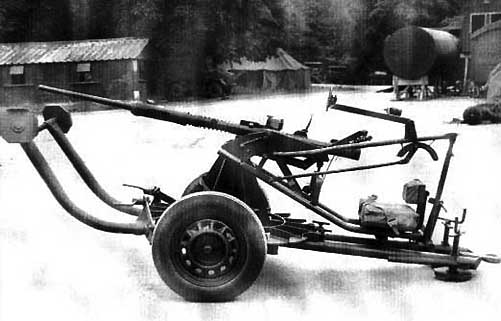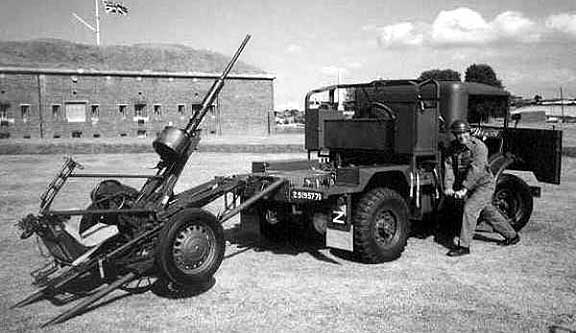This weapon had its genesis in a Polish development of the Swiss Oerlikon 20 mm Automatic Cannon produced initially by Seebach Maschinenau Aktien Gesellschaft and then by Werkzeug Maschinenfabrik Oerlikon. Following the invasion of Poland in 1939, the design team working on the weapon escaped to Britain and there collaborated with British and Czech designers to bring the cannon into production.

The Polsten was introduced into British service in March 1944 in various conformations and on a variety of mounts. Single, double, triple and quadruple configurations were employed and the Polsten could be towed, vehicle mounted or on other mobile or static mounts in land or sea applications. The Polsten and the Oerlikon S and FFS models were chambered for the same 20 x 110RB cartridge and used similar 60-round drum magazines. The Polsten could also use a simpler 30-round box magazine.
While the French Hotchkiss CA 39 25 mm anti-aircraft automatic cannon produced in limited numbers prior to the fall of France in 1940 was configured similarly to the Polsten, the peculiar arrangement of the Polsten and the CA 39 distinguished them in appearance from all other light automatic cannons and heavy machine guns. With a muzzle velocity of 830 m/s (2725 fps), the Polsten had a maximum range of 2000 metres and an effective range of 1000 metres. The cyclic rate of fire was 450 rpm.

The Canadian weapons manufacturer John Inglis Limited of Toronto produced some 500 quadruple-mount Polstens that saw war service. It is not clear whether the Polsten was employed in Australian service during the 1939-1945 War or whether it was brought into service in the post-war period. The writer has a recollection of seeing in the late-1940s an article in an Australian military publication on the Polsten complete with photographs of the weapon mounted in Australian military watercraft. The Polsten remained in British service into the 1950s and was mounted in Cromwell and early Centurion tanks.
Although simpler and less expensive to manufacture than the Oerlikon, the Polsten was no less effective as an anti-aircraft and general-purpose weapon.